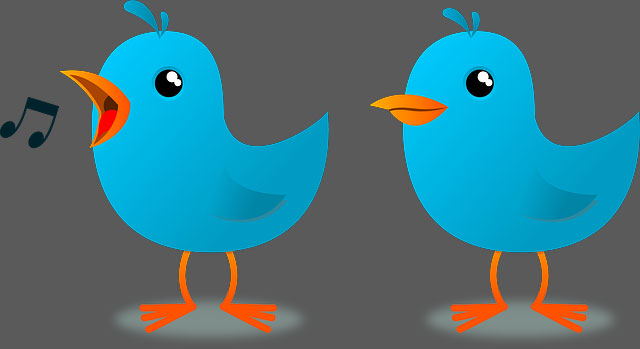 It began in 2006 as a pretty stupid idea: a service that let you post public messages on the Internet but limited them to 140 characters. Seven years later, Twitter has burrowed deep into the fabric of parts of society. Its highly anticipated initial public offering (IPO) provides a fascinating glimpse into the company’s inner workings.
It began in 2006 as a pretty stupid idea: a service that let you post public messages on the Internet but limited them to 140 characters. Seven years later, Twitter has burrowed deep into the fabric of parts of society. Its highly anticipated initial public offering (IPO) provides a fascinating glimpse into the company’s inner workings.
On 3 October, Twitter filed its S-1 form — the detailed prospectus required for listing on a US stock exchange. It gives us the first hard look at the financial state of the company, how many users and customers it currently has and any risks it may face in future. It also reveals the company’s stock symbol: TWTR which, amusingly, recalls the company’s original name “Twttr” (the vowels were added later).
Looking at user numbers alone, Twitter is clearly booming. In the second quarter of 2013, over 218m people used the service at least once per month — a 44% increase over the same period last year. More than 100m of those users access the service daily, creating over 500m tweets per day.
These numbers illustrate Twitter’s immense value to its users. The difficult thing is harvesting enough of that value to make the company profitable. Though its revenue nearly tripled between 2011 and 2012 — from US$106m to $317m — Twitter has never made a profit. In fact it is on track to lose more money this year than it did last year, mainly as a result of hiring more staff.
Compare that to Facebook, which made $1bn in profit in 2011 (the year before it listed) and was already substantially profitable by 2009 — just five years after it was founded in a Harvard dorm room.
This difficulty in making revenue stems, in large part, from Twitter’s highly decentralised nature. You can consume your Twitter feed via a huge range of apps, channels and services; the vast majority of them not owned or controlled by Twitter itself. This radical openness, which Twitter pioneered, allowed an entire ecosystem of companies and services to grow up around the core service.
But this decision may come back to haunt Twitter. Without direct control over the entire ecosystem, it may struggle to get its advertisers’ messages in front of a majority of its users. Since advertising makes up over 85% of its revenue, this is a serious challenge.
There is another side to this coin, though. Twitter has always had to work harder to generate revenue, and so its ideas are often better than its competitors’. Its “promoted tweets” and “promoted trends” products — in which advertisers pay to appear in people’s Twitter feeds — fit neatly into the flow of its services, unlike traditional models of advertising that rely on visual separation and interruption.
Very few people complain about excessive advertising on Twitter, whereas it’s a perennial bugbear for Facebook users. A sudden, shareholder-mandated flood of adverts is perhaps the most serious threat to Twitter’s future. But if it has managed to get this close to profitability without drowning its users in promotions, it may not need to in future.
Another of Twitter’s less obvious strengths is the quality of its users. Unlike the lowest common denominator appeal of Facebook, Twitter requires work. In order to win followers you must have something interesting to say, and you must do so regularly.
Even “lurking” on Twitter (consuming content rather than publishing it) requires more work than usual. Twitter has its own language and logic that needs to be learned. You have to decide, out of more than 200m people, who to follow and who to ignore.
You know your company is successful when it becomes a verb. We all “google” things and “facebook” each other. But Twitter has been an unusually fertile ground for new and repurposed verbs: we tweet (and retweet), we un-follow, we hashtag, we mention. This speaks of the unusually strong influence users have had on the service — spontaneously inventing many of its most useful features (including hashtags and retweets).
This makes Twitter users, on the whole, more adventurous, expressive and engaged than most social networks. Merely showing up is not enough to get value out of the network; you have to put some effort into it.
After years of “working” on their accounts, building up followers and credibility, avid Twitter fans have a much higher level of loyalty than other social networks, and a much stronger sense of shared ownership.

There are some less obvious but equally serious threats to Twitter’s long-term viability. One important purpose of an IPO is to unlock the value of shares held by founders and long-term employees with stock options.
Considering the incredible talent and entrepreneurial spirit of most of Twitter’s staff, some of those employees may choose to strike out on their own, armed with a handy chunk of start-up capital. Since Twitter lives and dies by its technology, its management will need to be ready for this exodus.
To its founders, Twitter was always an experiment. The fact that it will make them multimillionaires and billionaires must be vaguely amusing. While investors fret about long-term profitability, all of Twitter’s founders have moved on to new ventures. Whether their replacements can live up to their adventurous spirit remains an open question. — (c) 2013 Mail & Guardian
- Alistair Fairweather is chief technology officer at the Mail & Guardian
- Visit the Mail & Guardian Online, the smart news source




